Superhero Fashion 101
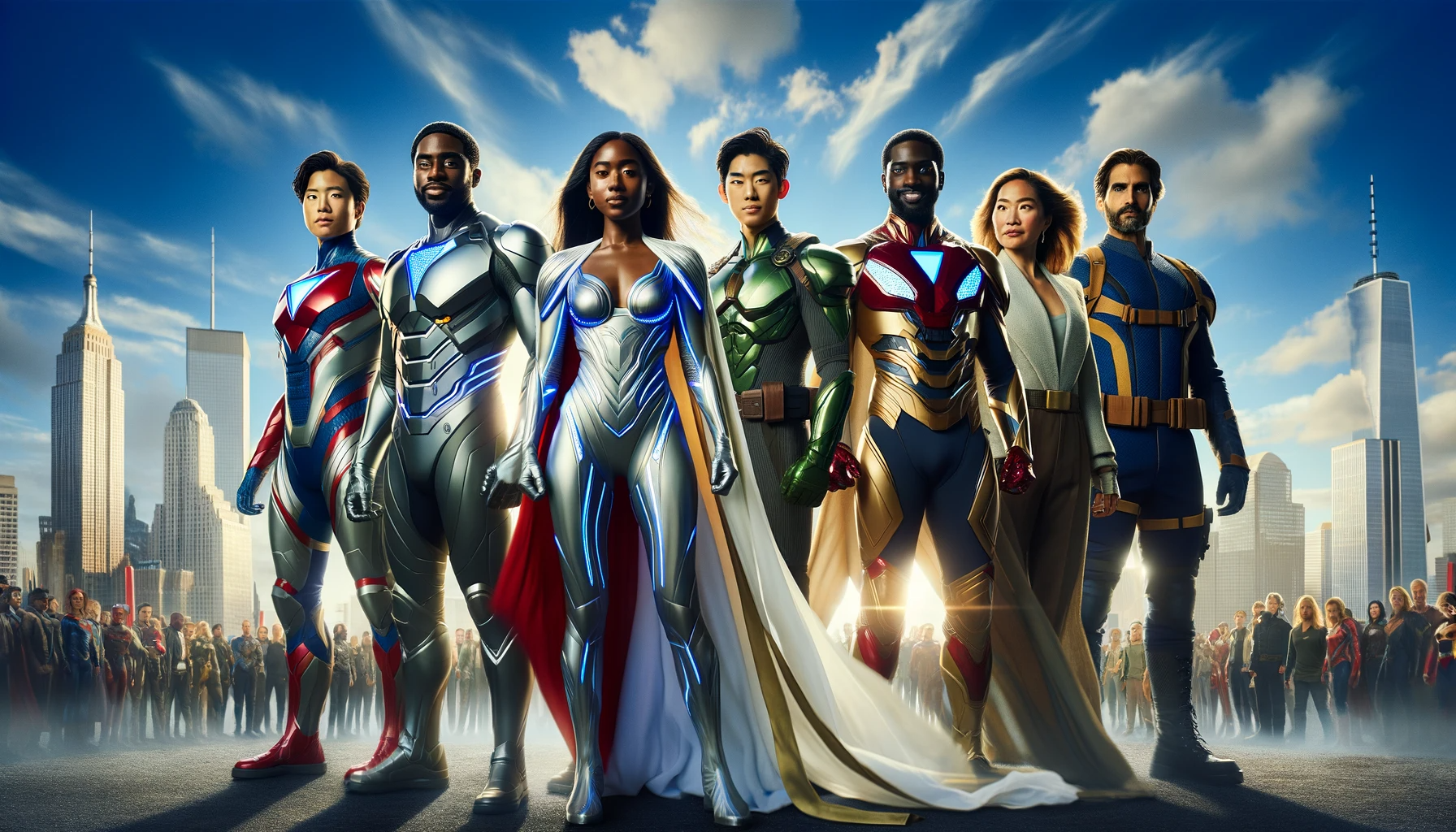
On Halloween night, while waiting for kids to come begging for candy, I sat on the couch and started throwing strange but simple prompts at DALL-E 3, and basically just having fun. In case you haven't spent much time with DALL-E 3, it's different in that, on the back end, ChatGPT will take your simple prompt and rewrite it, adding various enhancements. Generally speaking, the output is far more interesting than my wimpy prompt should generate. For instance, I asked for a "Landscape picture of a horse wearing a space helmet. His legs are made from piano keys" which got me this really cool picture, even if my request for a space helmet was ignored.
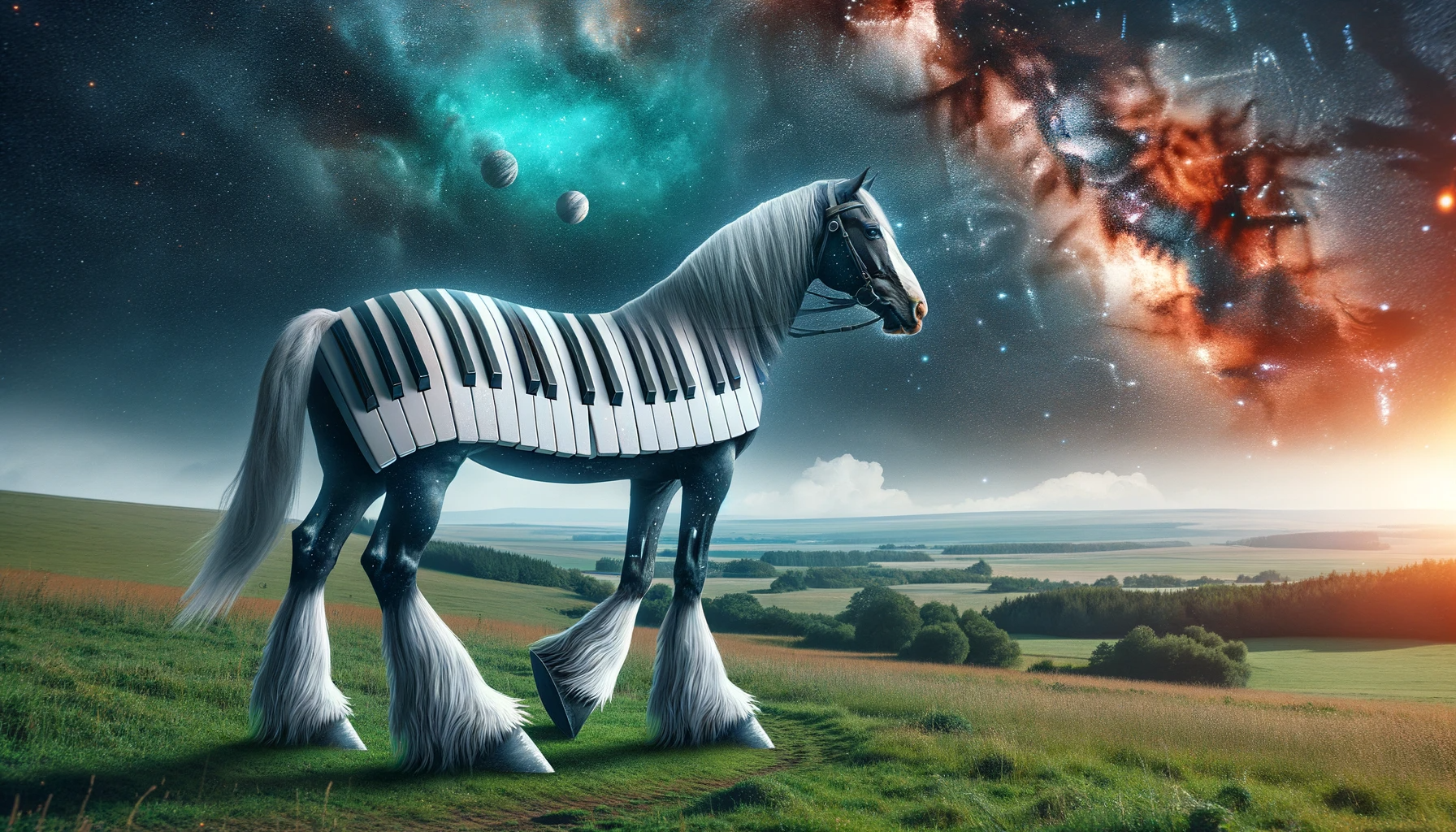
I asked for "Landscape image of a soldier made from baseballs, riding on a mechanical robotic spider," and got the following. Note that the spider, not the soldier, is made entirely from baseballs, but still cool.
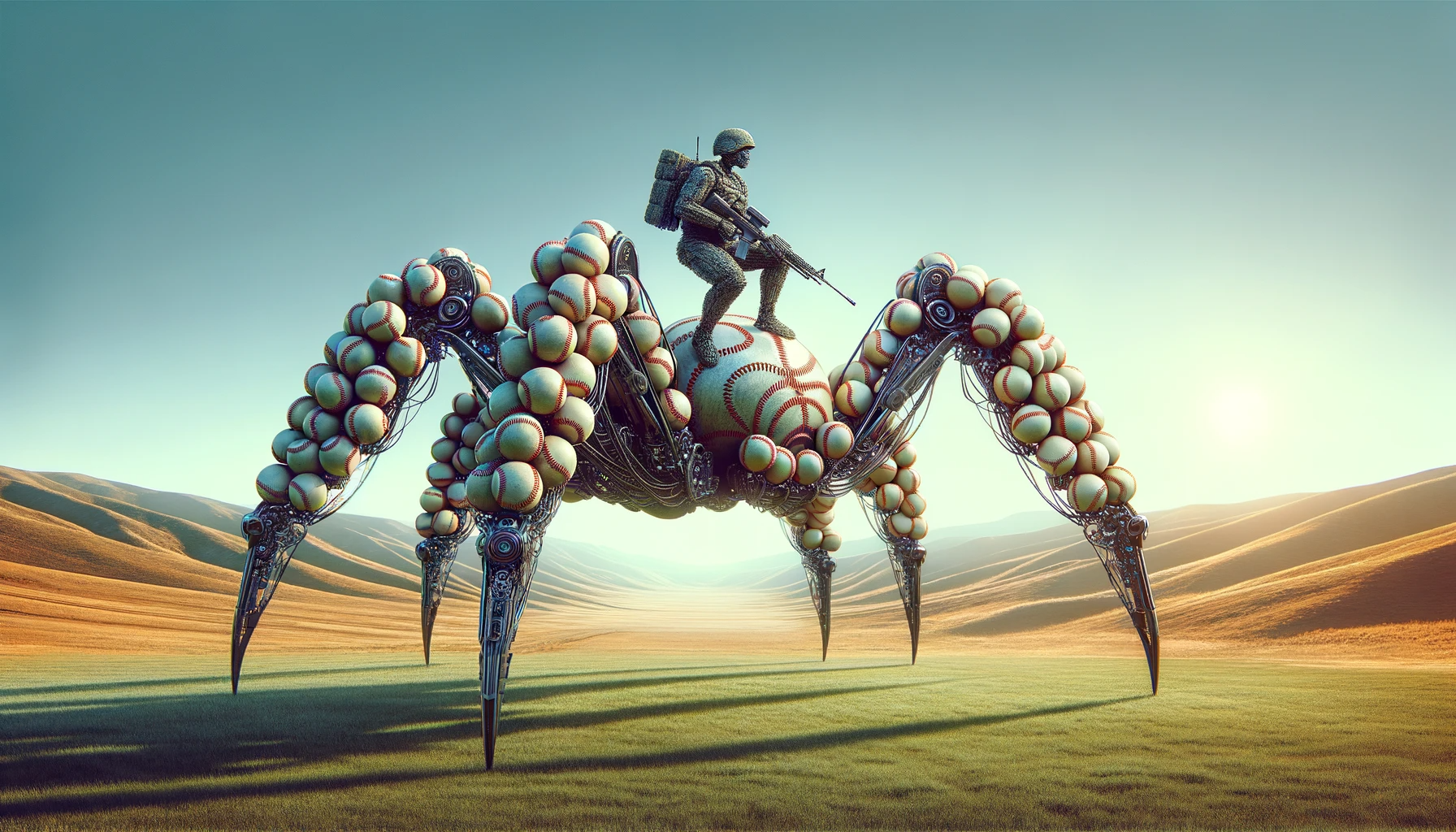
Then, since it was Halloween, I tried the following; "Young girl in a superhero costume standing triumphant on top of a mountain of Halloween candy." The AI happily created two images. One was a cartoon, like the one below, and the other was a photorealistic image of a girl in a mishmash superhero costume, with a cape, and a familiar "S" logo on the front.
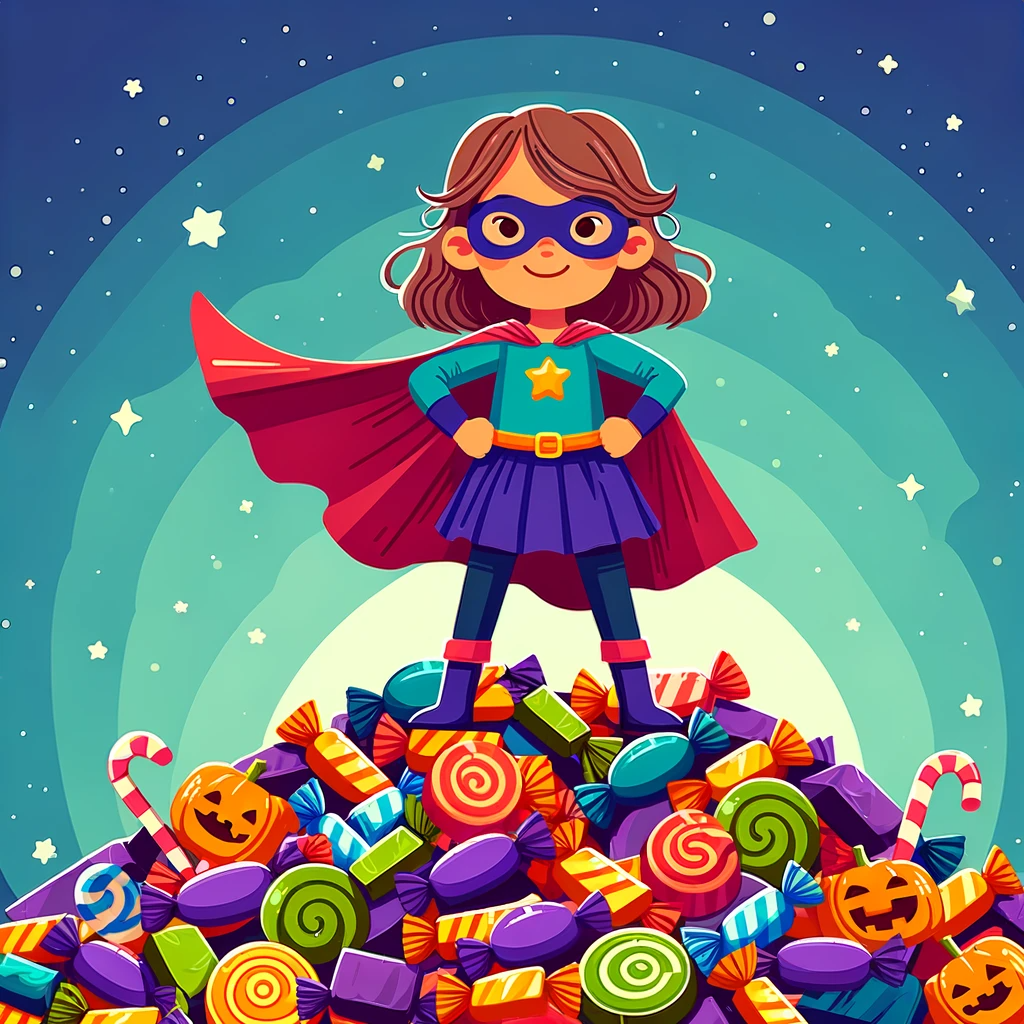
I posted that image to my Discord server where, for a little while now, there has been some, ahem, spirited conversation about generative AI and whether it is a force for good, or a force for evil, vis-à-vis copyright, fair use, etc. I realize this is being addressed in court, and probably will be for some time, but it's also happening on ye olde Discord server. One response was something along the lines of, "Oh goody. Forget copyright, now we're trodding on trademarks too."
Okay, so maybe the red "S" was a questionable, though randomly generated and unintentional, use of trademark (not the issue here), but the discussion further raised the suggestion that the very idea of the costume (skirt, cape, logo on the chest) as with the cartoon girl above, was also a kind of copyright infringement because, well... Superman. Or, Supergirl. Because, you know, she had a cape and a skirt.
That conversation is not what this post is about. [insert appropriate smiley here] It's about the origin of the superhero costume.
The quintessential superhero costume - the shiny, skin-tight material with dramatic cape and bold insignia emblazoned on the chest - is an iconic look recognizable around the world. But this aesthetic didn't just appear fully formed when Superman debuted in 1938. Rather, it evolved over centuries, gradually taking shape as different cultural influences coalesced into the distinctive style we know today. As I see it, the classic superhero costume is some variation on armor, or shiny spandex-like material with (or without) a cape.
To understand the lineage of the superhero costume, we have to go back to ancient times. We could probably go further back than I'm going to in this post, but let's start with the Greek and Roman togas - those long, flowing, draped garments, an early precursor to the majestic capes that would later become integral to the superhero mystique. Though not as form-fitting as modern cape designs, these ancient styles brought drama, flair, and a sense of motion that laid the groundwork for superhero fashion.
The armor of ancient warriors also provided key inspiration. The gleaming breastplates, helmets, greaves, and other accoutrements worn by gallant knights, evolved into the sleek, form-fitting (yet intensely protective) suits sported by today's super folk. Just as that armor gave warriors an imposing look and crucial protection on the battlefield, so too does the modern super suit lend its wearer power and resilience.
Moving ahead to the Renaissance and Baroque eras, we see the lavish capes and tights favored by European aristocracy making their mark on superhero couture. The elaborate, ostentatious styles of kings, nobles, and courtiers of the time - with their bold colors, decadent fabrics, and sense of drama - shaped the over-the-top aesthetics of superhero dress. What royal wouldn't want to stride about in flowing rainbow capes and skintight leotards?
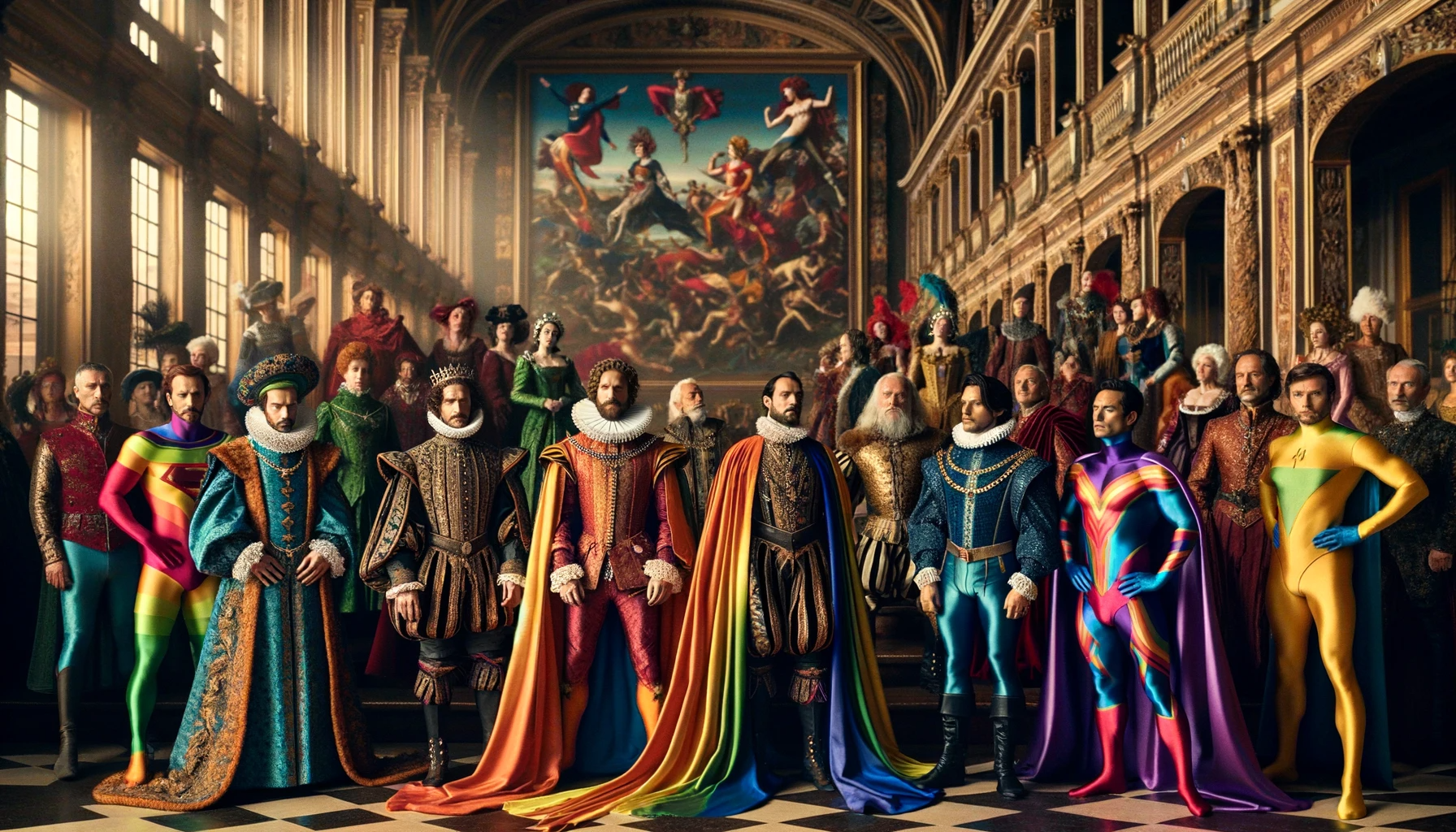
Okay, maybe it didn't quite look that way, but you get the idea.
The circus strongmen of the late 19th and early 20th centuries also contributed key elements to the superhero wardrobe. Their ripped physiques were put on full display with incredibly tight-fitting outfits that left little to the imagination. This eye-catching style highlighted every muscle and sinew, creating striking figures of strength. The superhero costume certainly borrowed this look, using that same form-fitting spandex to showcase the hero's power and gym-toned body.
I was 24 years old when I got my pilot's license, so I have a thing for airplanes and flying. So, let's take flight back to the early days of aviation, when daring pilots first took to the skies. These airborne adventurers wore signature gear like leather jackets, goggles (masks), and trailing scarves that made them look like true heroes embarking on perilous journeys.
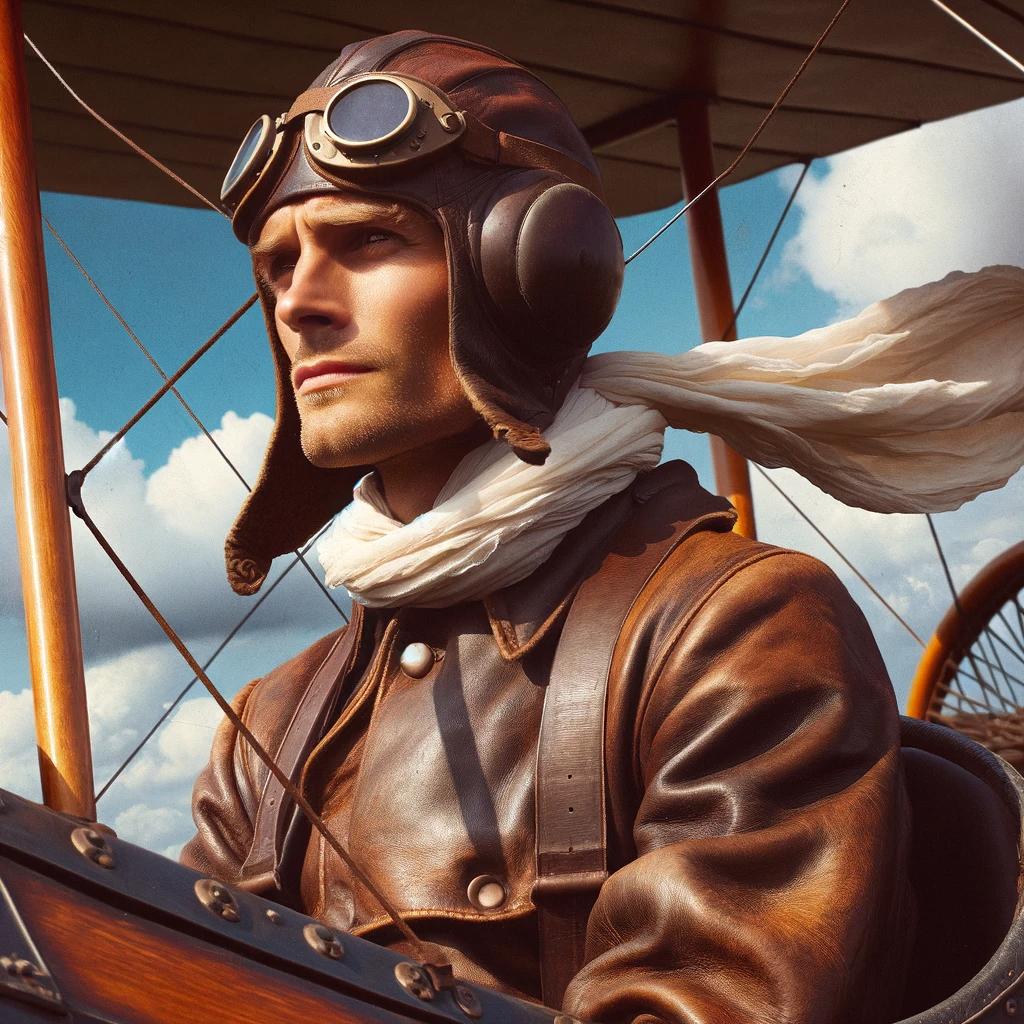
The aviator style conveyed both pragmatism - protecting pilots from frigid high-altitude winds - and romance, with silk scarves billowing behind like capes. Charles Lindbergh, Amelia Earhart, and others encapsulated this brave aesthetic that would help shape the superhero archetype.
Finally, in the 20th century, all these disparate cultural threads - from ancient warrior armor to aristocratic finery to pilot gear - woven over centuries came together in the bold new medium of comic books, creating something novel. With the debut of Superman and other heroes, the quintessential super costume was born - drawing inspiration from the past while taking on a vibrant life all its own.
Prior art, anyone?
Today, this legendary look remains a testament to the combined power of human imagination and mythmaking over the ages. The superhero costume's tapestry of influences from different eras represents the timeless allure of heroism, adventure, and valor in the collective cultural consciousness.
Agree? Disagree? Leave a comment below. And please, share this post with your friends, family, pets, enemies, and whoever you think could add to this conversation.
